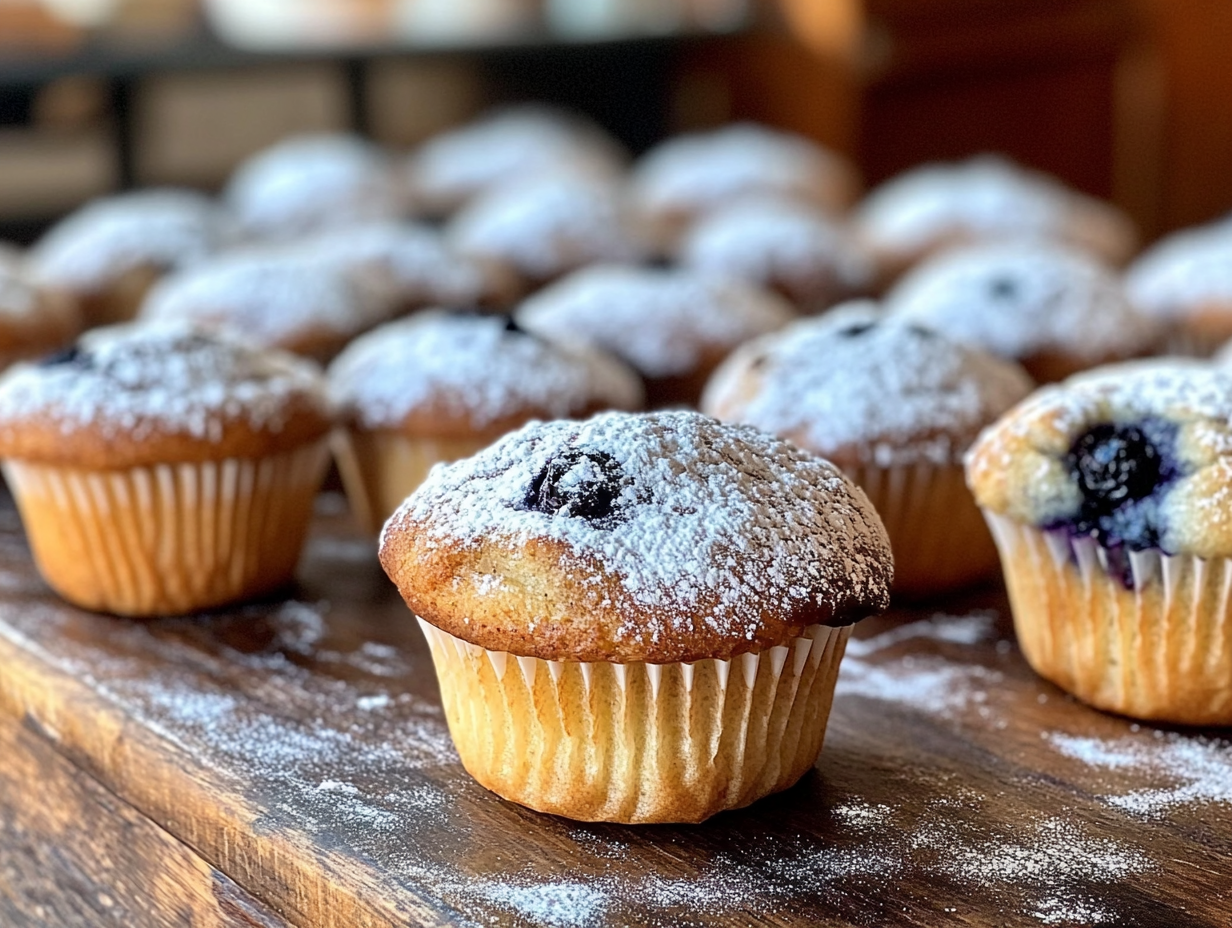Baking gluten-free muffins can sometimes result in disappointing outcomes, such as flat, dense muffins that don’t rise. If you’ve found yourself asking, “Why did my gluten-free muffins not rise?”, you’re not alone. Gluten plays a critical role in traditional baking, helping baked goods rise and maintain structure. Without it, the process changes dramatically. In this guide, we’ll explore the most common reasons gluten-free muffins don’t rise and provide tips to help you achieve perfectly risen muffins.
Why Gluten-Free Muffins Often Don’t Rise
In traditional baking, gluten acts as a binder, trapping air and providing structure that allows baked goods to rise. Without gluten, you need to rely on other ingredients to mimic that effect. Here are the main reasons why gluten-free muffins might fail to rise:
1. Incorrect Flour Blend
One of the most common reasons gluten-free muffins stay flat is using the wrong flour blend. Some gluten-free flours, such as coconut flour, are highly absorbent and heavy, making it difficult for the batter to rise. Rice flour can also lead to a denser result.
Solution:
Use a gluten-free flour blend that contains lighter flours and starches, like tapioca or potato starch. These create a better structure for the muffins and help them rise. For more tips on choosing the right flour blend, check out our article on the best gluten-free flour for muffins.
2. Not Enough Leavening Agent
Without gluten, your muffins rely heavily on leavening agents such as baking powder or baking soda to rise. Not using enough can result in flat muffins.
Solution:
Increase the amount of leavening agent in your recipe. Gluten-free recipes often require more baking powder or baking soda than their traditional counterparts. Try adding an extra ¼ teaspoon of baking powder per cup of gluten-free flour to help your muffins rise.
3. Overmixing the Batter
Overmixing is a common mistake in gluten-free baking. Unlike traditional batters, gluten-free batters are more sensitive to mixing. Overmixing can cause air bubbles to escape, leading to dense, flat muffins.
Solution:
Gently mix the batter until the ingredients are just combined. This will trap air bubbles and give the muffins a better chance to rise during baking.
4. Using Expired Leavening Agents
Another reason why your gluten-free muffins might not rise is using old or expired baking powder or baking soda. These leavening agents lose their effectiveness over time.
Solution:
Always check the expiration dates on your leavening agents. If they’re more than six months old, it’s time to replace them. Using fresh baking powder or soda will ensure that your muffins rise as expected.
5. Incorrect Oven Temperature
Baking gluten-free muffins at the wrong temperature can prevent them from rising properly. Too low of a temperature won’t allow the muffins to rise quickly enough, and too high of a temperature can cause them to rise too quickly and collapse.
Solution:
Ensure your oven is preheated to the correct temperature before placing the muffins inside. Most gluten-free muffin recipes work best at 350°F (175°C). Also, avoid opening the oven door frequently, as this can cause the muffins to deflate.
Other Factors to Consider When Baking Gluten-Free Muffins
Overfilling the Muffin Cups
Filling your muffin cups too full can cause the muffins to spread outwards instead of rising upwards.
Solution:
Fill your muffin cups about two-thirds of the way to allow room for the muffins to rise.
Lack of Binding Agents
Without gluten, your muffins might lack the structure needed to hold their shape. Binding agents like xanthan gum or guar gum can help provide stability.
Solution:
If your gluten-free flour blend doesn’t already contain xanthan or guar gum, add about ½ teaspoon per cup of flour to improve the structure and help the muffins rise.
FAQs
Why are my gluten-free muffins dense and not rising?
Dense muffins are often the result of not using enough leavening agent or overmixing the batter. To help your gluten-free muffins rise, ensure you are using the right amount of baking powder or soda and mix gently. Learn more about preventing dense muffins in our guide on why gluten-free muffins are often dry.
How can I make my gluten-free muffins rise more?
You can help your muffins rise by increasing the amount of leavening agent, using room temperature ingredients, and ensuring the correct oven temperature. Adding a binder like xanthan gum can also help support the muffin structure during baking.
Why did my gluten-free muffins sink after rising?
If your gluten-free muffins rise and then collapse, it could be because they were underbaked, overmixed, or the oven temperature was too high. Ensure that the muffins are fully baked by testing them with a toothpick and avoid opening the oven door during baking.
Conclusion
If you’ve been struggling with gluten-free muffins that won’t rise, the problem likely lies in your flour blend, leavening agents, or mixing technique. By making a few small adjustments, you can prevent flat muffins and achieve light, fluffy results. Remember to use a balanced gluten-free flour blend, the correct amount of baking powder or soda, and mix your batter gently. For more gluten-free baking tips, check out our article on how to make perfectly moist gluten-free muffins.

